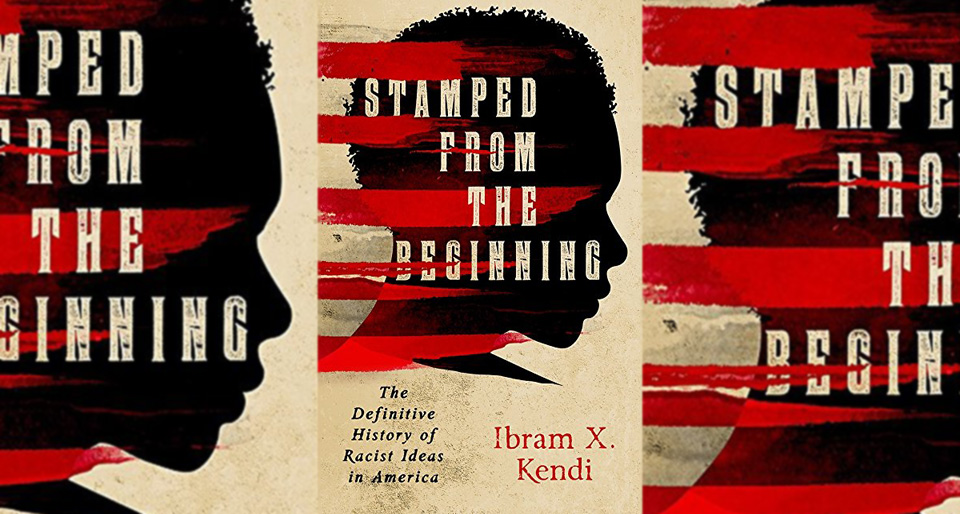
WASHINGTON–U.S. racism, specifically racism against African-Americans, takes several forms, and the best way to battle them is to change policies, since changing people’s minds is much more difficult, a noted author and analyst of racism says.
That’s because policies can curb the producers of racism, who use it to exploit people, adds Ibram Kendi, who has just been named to head a special institute at American University in D.C., to bring policymakers, analysts and social scientists together to brainstorm ways to combat racism. Changing the minds of racism’s consumers, conscious or unconscious, is much more difficult, he admitted.
Kendi, author of Stamped From The Beginning: The Definitive History of Racist Ideas in America, discussed the ideas of racism before a standing-room-only crowd on August 23 at Politics and Prose, a noted independent Washington bookstore that hosts frequent authors’ programs, especially on controversial issues.
And, as might be expected, he tied development of racist ideas in the U.S. to current events, specifically to the racist riot in Charlottesville, Va., where one member of the mob of Nazis, KKKers, white supremacists and alt-righters drove his car into an anti-hate crowd, killing Heather Heyer and injuring 19 people.
But Kendi, whose book won a National Book Award as a hardcover several years ago — it’s now out in paperback — was more specific about the development of the racist ideas before Charlottesville.
He traced them through the biographical stories of the racial roles and attitudes of five prominent people: Colonial-era preacher and writer Cotton Mather, Thomas Jefferson, the slave-holding author of the Declaration of Independence, William Lloyd Garrison, the fiery publisher whose 1840s newspaper, The Liberator, was the first clarion call of the abolition movement, African-American intellectual W.E.B. DuBois, and current advocate and academic Angela Davis.
Racist ideas, said Kendi, originally split into two categories. One maintains people are “created unequally,” which he termed “the segregationist idea.” The other is African-Americans “started equal but became inferior” through society’s treatment.
Mather, whose writings heavily influenced colonial society and thinking, was the intellectual author of the segregationist idea, Kendi said. It was that African-Americans “are so barbaric or so childlike, they needed to be enslaved.”
The logical outcome of the second idea is assimilation as a way to create equality, Kendi explained. That’s where Garrison was coming from. “He said slavery is so horrific that literally we have to eliminate it…Even well-intentioned white and progressive people, including the abolitionists, will advance and perpetuate assimilationist ideas.”
But a third idea has intruded on the other two, he said. And even now, “We’re engaged in a 3-way debate about race — with people using different terminology” than in the U.S. past, but “still the same debate.”
It appears these days, Kendi notes in the phrases “Black lives matter,” “Blue lives matter,” and “All lives matter,” for example. In that idea scenario, Kendi said, the “All lives matter” proponents say adherents of the other two ideas are both right and wrong, simultaneously.
Black Lives Matter proponents heavily criticize the U.S. criminal justice system’s racism and its disproportionate arrests, jailing and execution of black males. Blue Lives Matter proponents deny that evidence and ask “What’s wrong with black people?” They cite selective inner-city crime statistics and also claim there’s “a war on cops,” Kendi noted.
“The All Lives Matter” group “says ‘You’re both wrong'” because each sees only part of the picture.
But “the reader has to grapple with” unconscious bias, Kendi said. That includes readers in both races, since people can simultaneously hold assimilationist and segregationist ideas, depending on the issues, the circumstances and who they’re talking with.
“These are not fixed categories,” he warned. People “can champion the superiority of one racial group in the morning while admitting inequality in the evening.”
Overall, Kendi noted, racist ideas often arose as after-the-fact justifications for racist policies. Since the ideas are so hard to dislodge from people’s heads, “It’s important to define a racist policy,” and change it to knock the props out from under the ideas.
He gave the “Blue Lives Matter” arguments as an example. Proponents cite crime in African-American communities as justification for their stands. But when you control the data for income and economic opportunities, Kendi said, you discover economic distress is the class basis of higher crime rates, regardless of race. “There’s a correlation between dangerous neighborhoods and unemployment levels,” he pointed out.
“Wouldn’t it change the conversation” about race and racism “if we defined it like that?” Kendi asked.
Right now, the conversation politically oscillates, as it has throughout U.S. history, Kendi noted. Periods of reaction follow eras of racial progress. He cited the Jim Crow era following Reconstruction and the “Southern Strategy” as a reaction against the 1960s civil rights movement.
That’s happening today, he added. Charlottesville — particularly Republican President Donald Trump’s embrace of the racists there — is a symptom of the reaction to the very idea of an African-American, Barack Obama, in the White House for the prior eight years.
“So what do we solve first: The policies or the hearts and minds?” shaped by racist ideas, Kendi asked. His answer is the policies.
“I wanted to write about the producers” of racial policies “and why they produced those ideas at the time. I saw over and over again they produced the ideas to justify racial inequality” they already planned to impose. “They wanted you and I not (his emphasis) to think a discriminatory policy was causing” racism, because the racism “was benefiting them.”
“The way forward is to realize there’s nothing wrong with groups of people,” Kendi said. “We have to focus on policies” those groups impose “and the way to change policies is to change the people in power.”
Changing hearts and minds is much more difficult, he admitted, because “race is so personal to everyone, so we pick and choose which ideas are closest to our identity. That means it’s difficult to engage racism with an open mind.”
The entire book talk, which ran almost an hour and a half, is available on the bookstore’s YouTube channel: www.politics-prose.com/video/stamped-beginning-ibram-x-kendi.

MOST POPULAR TODAY

Hold the communism, please: SFMOMA’s Diego Rivera exhibit downplays artist’s radical politics

‘Warning! This product supports genocide’: Michigan group aims to educate consumers

After months of denial, U.S. admits to running Ukraine biolabs

Ohio: Franklin County treasurer attends Netanyahu meeting, steps up Israel Bond purchases

“Trail of Tears Walk” commemorates Native Americans’ forced removal






Comments